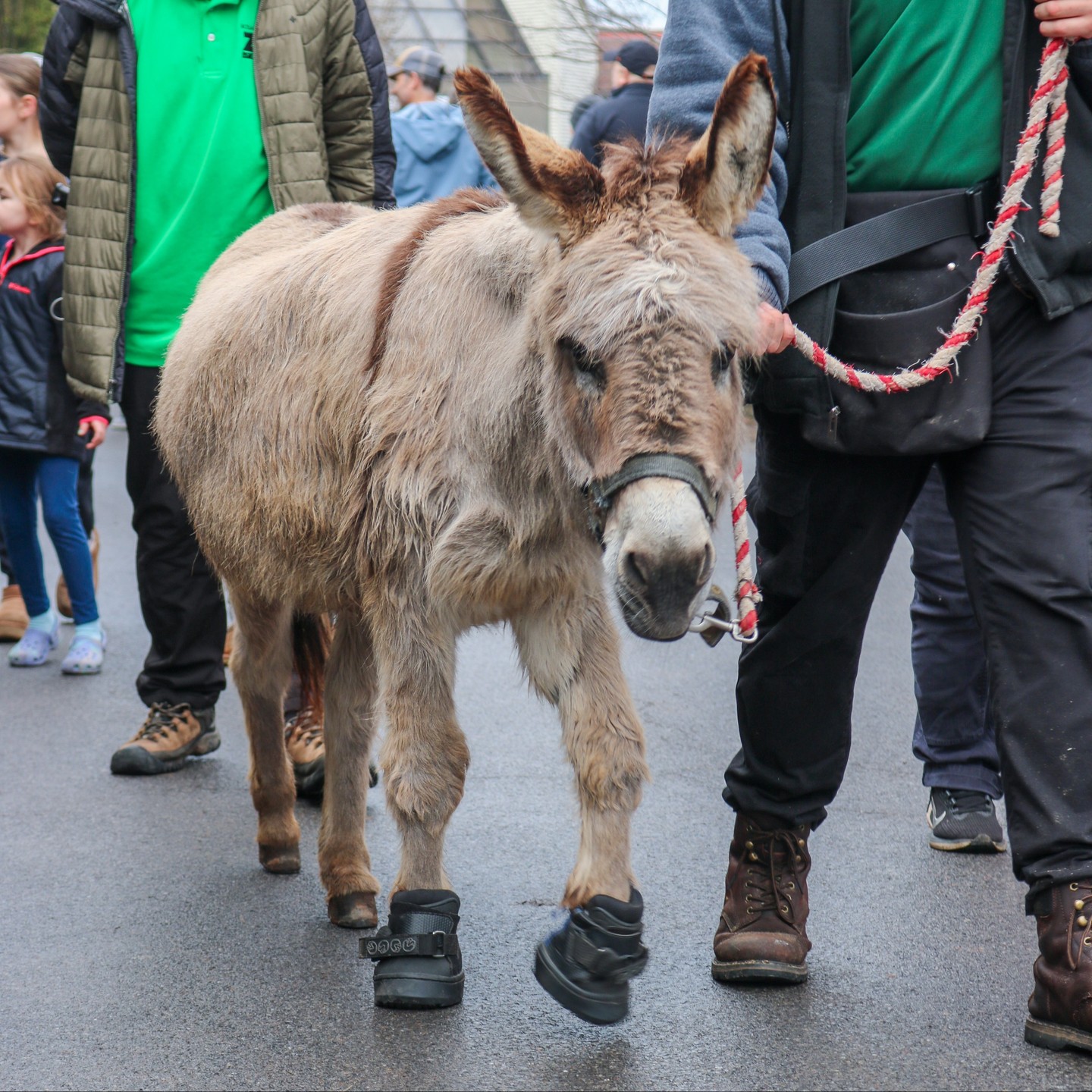- The significance of hoof care in aging donkeys and the role of specialized footwear in improving their quality of life.
- An overview of Chucheria, the Mini Mediterranean donkey, and her specific needs related to age-related hoof problems.
- The design and functionality of specialized booties for donkeys, including the materials and techniques used.
- The importance of wildlife conservation and responsible animal management in zoos and sanctuaries.
- Broader implications of innovative care practices in promoting animal welfare and conservation education.
Hoof care is a critical aspect of maintaining the well-being of aging donkeys, including the charming Mini Mediterranean donkey, Chucheria, affectionately known as Chooch. As equines age, they are susceptible to a variety of hoof-related conditions that can affect mobility and quality of life. Conditions such as laminitis, arthritis, and hoof deformities are not uncommon. These ailments can lead to significant discomfort, reduced mobility, and secondary health issues if not addressed properly. Thus, providing targeted care through innovative methods like specialized footwear becomes essential.
Chooch’s journey with age-related hoof problems highlights the necessity for thoughtful and individualized care approaches. As animals in managed care settings, such as zoos and sanctuaries, live longer due to enhancements in veterinary care and nutrition, they inevitably face geriatric challenges. In Chooch’s case, her caretakers devised a proactive strategy to support her well-being. By outfitting her with specially designed booties, they aimed to alleviate the pressure on her hooves and improve her mobility, ensuring she remains active and comfortable as she ages.
The custom footwear created for Chooch is more than a practical solution; it is a marvel of thoughtful design and materials science. These booties are crafted to accommodate the unique anatomical structure of donkey hooves while providing the cushioning and support needed for long-term health. Typically, materials like durable rubber and neoprene are used to offer both flexibility and protection. The booties are secured with adjustable straps, guaranteeing a snug fit that prevents slippage. This attention to detail in design is crucial, as improperly fitted footwear can cause new problems or exacerbate existing ones.
Specialized booties for donkeys serve multiple purposes: they act as a preventive measure, offering protection against further wear and tear, as well as therapeutic support, reducing inflammation and improving circulation in affected areas. Additionally, by addressing common hoof ailments proactively, these innovations can minimize the need for more invasive interventions, such as surgery or long-term medication, which further underlines their value in veterinary care.
From a broader perspective, the case of Chooch and her booties reinforces the importance of wildlife conservation and the responsible management of animals in controlled environments. Zoos and sanctuaries have increasingly become centers for conservation education, demonstrating best practices in animal management. In these settings, caregivers must strike a delicate balance between maintaining the natural behaviors and environments of the animals while providing the necessary interventions to ensure their health.
Incorporating novel techniques, such as Chooch’s specialized footwear, reflects an adaptive approach to animal care, one that prioritizes the well-being of the individual animal. This method aligns with contemporary conservation values, highlighting the ethical imperative to offer optimal care to animals under our stewardship. By modeling these practices, zoos and sanctuaries not only enhance the quality of life for their residents but also educate the public about the significance of animal welfare.
The story of Chooch and her booties speaks to a broader movement within the field of animal care and conservation. It emphasizes the significance of creative problem-solving approaches in addressing the specific needs of aging animals. This case provides a template for other institutions looking to bolster their animal welfare practices through innovation and attention to the unique requirements of each species.
An interesting aspect of this innovation is how it aligns with the public’s growing interest in wildlife and conservation. As institutions implement forward-thinking methods, they engage the public in meaningful discourse about the future of animal care. Initiatives like Chooch’s serve a dual purpose; they improve the lives of individual animals and foster appreciation for the complexities of animal management among visitors.
Moreover, in a time when the conservation of genetic diversity is increasingly crucial, ensuring that all animals, even those not immediately endangered, receive exceptional care is vital. The Mini Mediterranean donkey is not necessarily at risk of extinction, but by supporting Chooch’s health and longevity, zoos contribute to the broader goals of biodiversity conservation and educational outreach.
In summary, Chooch’s experience with specialized booties illustrates a notable advancement in the care of elderly donkeys within controlled environments. As this practice gains traction, it could pave the way for new standards in animal welfare and inspire further innovations in the field. Attention to detail, combined with a compassionate understanding of animal needs, positions institutions to lead in conservation efforts and enhance the public’s understanding of their importance. The integration of tailored care strategies underscores the responsibility of caregivers to innovate and adapt, ensuring animals like Chooch enjoy fulfilling lives, even as they age.
*****
Source Description
🎵These boots are made for walking, so that’s just what Chooch will do!🎵
Mini Mediterranean donkey Chucheria, AKA Chooch, has specially designed booties to help combat age-related hoof problems.


